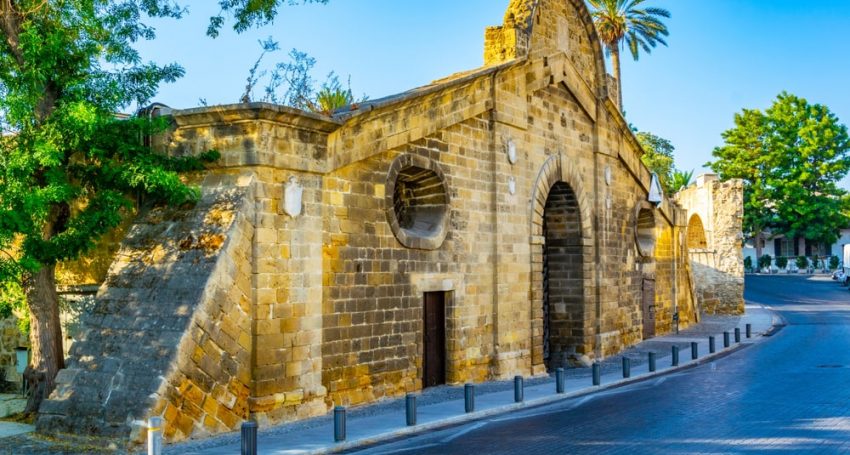Everyone who came to Nicosia at least for a short while and got to the city center undoubtedly remembers the impressive yellow stone walls surrounding the historic center. In ancient times, the ancient capital of Cyprus – Lydra – was inside the walls. Now its name is the city’s central pedestrian street.
The walls were built to protect the capital from enemy raids. In the Middle Ages, they were completely rebuilt by the Venetian Republic, which then owned Cyprus. They are one of the most interesting medieval fortifications of the Mediterranean.
In the Renaissance, the Cypriot Nicosia, as well as the Maltese city of Valletta and the Italian Palmanova were considered an ideal example of how comfortable and safe life becomes people in cities protected from enemies.
The first fortification of Nicosia was the castle, built by Louisiana in 1211. Then, in 1368, King Pierre I built a tower called the Tower of Margarita. His successor, Pierre II demolished the tower and began building the walls.
In 1498, Cyprus became part of the Venetian Republic. At first, the Venetian doge did not care much about repair and construction of new fortifications.
However, after Malta fell in 1565, for fear of Ottoman expansion, Venice began to fortify the borders of its Mediterranean possessions.
In 1567, Italian military engineers and architects considered the ancient walls insufficiently reliable and demolished them in order to build them all over again.
Along with the walls, the ancient houses, palaces and several churches were demolished. Part of the building material was used to build the walls.
In the same period of time was set aside the riverbed Pedieos – at that time, it often went out of the banks and flooded the city.
The Fourth Ottoman-Venetian War began in 1570, when the construction of the walls was not yet finished.
The Turks besieged and managed to seize Nicosia. The defenders of Cyprus were killed, Cyprus for 400 years passed under the rule of the Ottomans.
By the early 17th century, the walls were partially destroyed. Their restoration began in the late 19th century, when Cyprus passed into English hands.
The walls of Nicosia are shaped like snowflakes with 11 “rays” – bastions. The total length of the walls is about 5 km. The bastions are clearly visible on the medieval map.
At present, right in the middle of the city there is a demarcation line dividing Nicosia into two parts. In the Republic of Cyprus there are 5 bastions (Caraffa, Podocattoro, Constanta, D’Avila, Tripoli), another 5 (Roccas, Mula, Girini, Barbaro, Loredan) are located in the occupied territories. One bastion (Flatro) is in the UN buffer zone.
There were three fortress gates within the walls:
The western gate of Paphos (Paphos Gate or Porta San Domenico).
East Gate of Famagusta (Famagusta Gate or Porta Guiliana)
Northern Gate of Keronia (Kyrenia Gate or Porta del Proveditore)
The construction of the walls was not completed because the Ottomans conquered the island.


